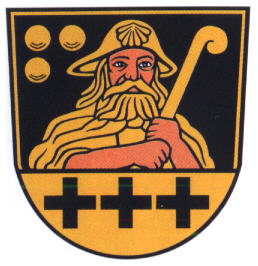Pilgrim's hat
Pilgrim's hat refers to a specific style of hat that is often associated with the imagery of the Pilgrims who settled in Plymouth, Massachusetts, in the early 17th century. This type of hat is also known as a Pilgrim hat or a Puritan hat, reflecting the religious groups that popularized its wear. The Pilgrim's hat is characterized by a wide brim and a rounded crown, often featuring a buckle at the front. While the iconic buckle is a common depiction in modern representations of Pilgrims, especially in the context of Thanksgiving celebrations in the United States, historical accuracy regarding this detail is debated among historians.
Design and Symbolism[edit | edit source]
The traditional Pilgrim's hat is made of felt, a material created from compressed wool or fur. The wide brim served practical purposes, offering protection from sun and rain, while the high crown could accommodate the wearer's head more comfortably. The addition of a buckle on the hat, though not universally accepted as historically accurate, has become a symbol of the Pilgrim identity in popular culture. This depiction likely stems from 19th-century artistic interpretations of the Pilgrims, aiming to convey a sense of austerity and simplicity associated with their values.
Historical Context[edit | edit source]
The Pilgrims, part of a group of English Puritans, sought religious freedom and sailed to North America aboard the Mayflower in 1620. Their attire, including the Pilgrim's hat, was reflective of the clothing styles of the early 17th century in England, adapted to their new life and the harsh conditions of the New World. The Pilgrim's hat, therefore, is not only a piece of clothing but also a symbol of the Pilgrim's journey and their quest for a place to practice their faith freely.
Cultural Significance[edit | edit source]
In modern times, the Pilgrim's hat has transcended its historical origins to become a symbol of the Thanksgiving holiday in the United States. It represents not only the Pilgrims themselves but also the broader themes of exploration, settlement, and the giving of thanks. The hat, often depicted in children's drawings, decorations, and holiday paraphernalia, has become an emblem of the American Thanksgiving tradition, alongside other symbols such as the turkey and the cornucopia.
Contemporary Use[edit | edit source]
Today, Pilgrim's hats are commonly seen in educational settings, where they are used as teaching tools to discuss the history of Thanksgiving and the early settlers in America. They are also popular in theatrical productions, historical reenactments, and as festive attire during Thanksgiving celebrations. Despite the questions surrounding the historical accuracy of the buckle detail, the Pilgrim's hat remains a recognizable and enduring symbol of American history and heritage.
Search WikiMD
Ad.Tired of being Overweight? Try W8MD's physician weight loss program.
Semaglutide (Ozempic / Wegovy and Tirzepatide (Mounjaro / Zepbound) available.
Advertise on WikiMD
|
WikiMD's Wellness Encyclopedia |
| Let Food Be Thy Medicine Medicine Thy Food - Hippocrates |
Translate this page: - East Asian
中文,
日本,
한국어,
South Asian
हिन्दी,
தமிழ்,
తెలుగు,
Urdu,
ಕನ್ನಡ,
Southeast Asian
Indonesian,
Vietnamese,
Thai,
မြန်မာဘာသာ,
বাংলা
European
español,
Deutsch,
français,
Greek,
português do Brasil,
polski,
română,
русский,
Nederlands,
norsk,
svenska,
suomi,
Italian
Middle Eastern & African
عربى,
Turkish,
Persian,
Hebrew,
Afrikaans,
isiZulu,
Kiswahili,
Other
Bulgarian,
Hungarian,
Czech,
Swedish,
മലയാളം,
मराठी,
ਪੰਜਾਬੀ,
ગુજરાતી,
Portuguese,
Ukrainian
Medical Disclaimer: WikiMD is not a substitute for professional medical advice. The information on WikiMD is provided as an information resource only, may be incorrect, outdated or misleading, and is not to be used or relied on for any diagnostic or treatment purposes. Please consult your health care provider before making any healthcare decisions or for guidance about a specific medical condition. WikiMD expressly disclaims responsibility, and shall have no liability, for any damages, loss, injury, or liability whatsoever suffered as a result of your reliance on the information contained in this site. By visiting this site you agree to the foregoing terms and conditions, which may from time to time be changed or supplemented by WikiMD. If you do not agree to the foregoing terms and conditions, you should not enter or use this site. See full disclaimer.
Credits:Most images are courtesy of Wikimedia commons, and templates, categories Wikipedia, licensed under CC BY SA or similar.
Contributors: Prab R. Tumpati, MD

